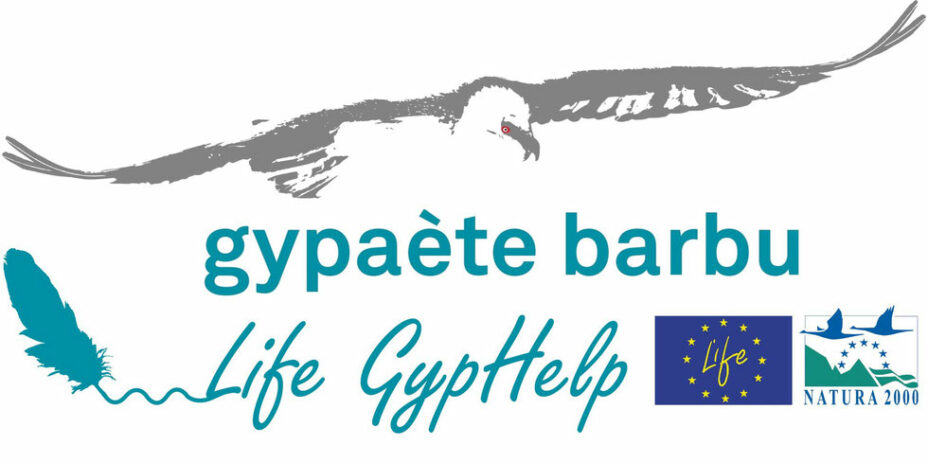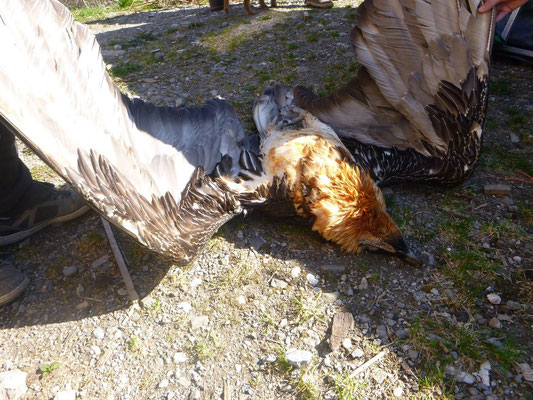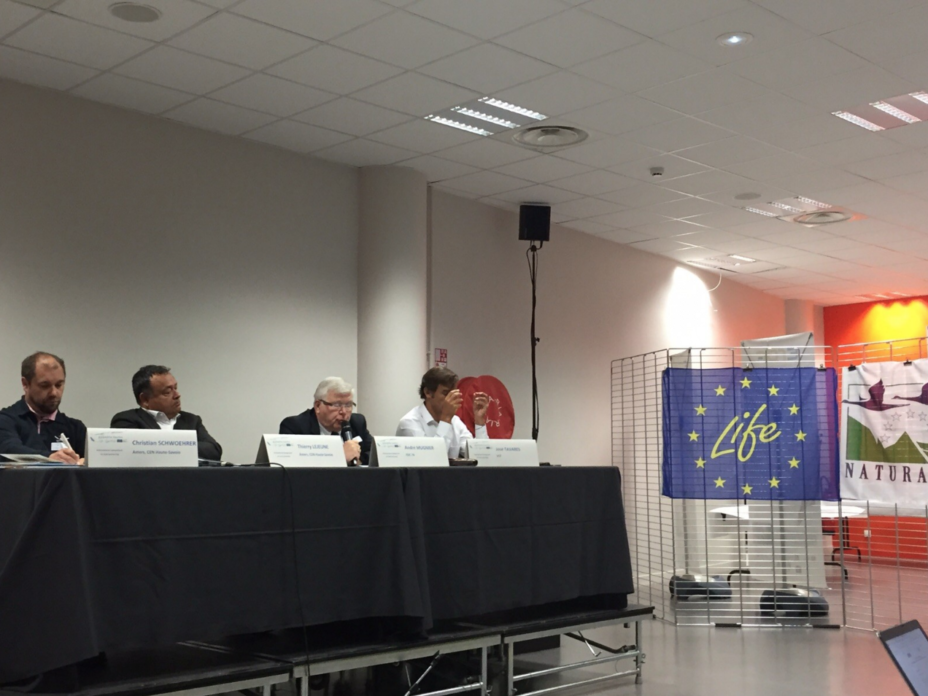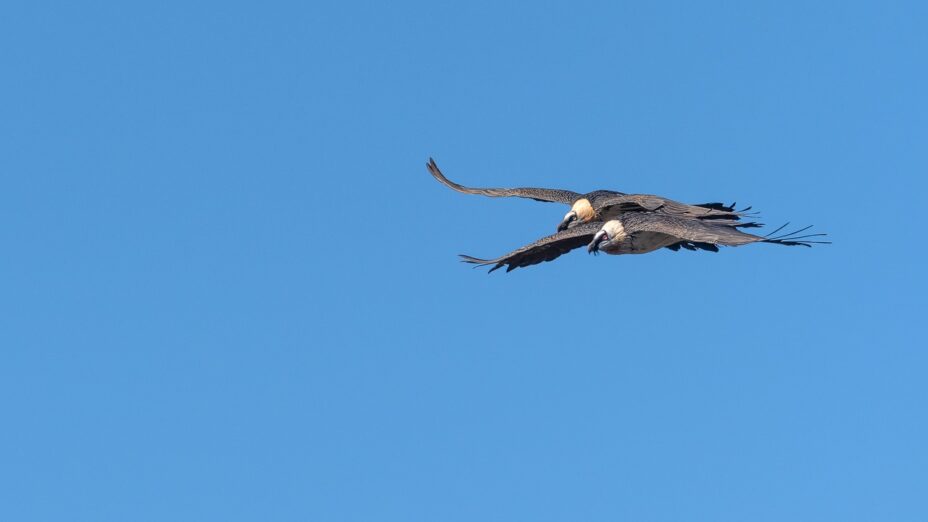© Hansruedi Weyrich

| Initiative period | August 2014 to December 2018 |
|---|---|
| Initiative area | French Alps |
| Target species | Bearded Vulture |
The Life GypHelp project aimed to preserve and increase the Bearded Vulture population in the French Alps by reducing anthropogenic mortality risks, namely the collisions against cables, poisoning (particularly lead poisoning), and disturbance of the breeding sites by human activities.
Bearded Vultures were once found across the mountains of southern Europe and the Alpine arc, but over the course of the 19th and 20th Centuries, the population of this vulture crashed, disappearing from much of its range as a result of the decrease of wild herbivores, changes in farming practices and direct persecution by people. In the Alps, the species went extinct in 1913, when the last bird was shot at Aosta Valley. Thanks to a reintroduction project that began in the 1970s, the species returned to the mountain range. In France, there were only 50 breeding pairs left in 2011, but thanks to reintroduction efforts that followed, the species population gradually increased. However, the equilibrium remained fragile and adult mortality could rapidly reverse this trend, so it was necessary to take further action to protect these birds.
Through tackling the various threats the species face in the French Alps and understanding the effects these actions had on the population, the project helped boost the population of the species while informing future conservation actions through the knowledge gained.
LEARN MORE ABOUT THE TARGET SPECIES
With funding from the European Union’s LIFE+ programme, we’ve been working alongside the LIFE GypHelp partners for four and a half years, to evaluate and tackle threats, and monitor the species population.
COLLISION
Collision with energy infrastructure or ski lifts has been identified as one important mortality cause for the species in the Alps as several Bearded died after colliding with cables over the past years. The LIFE GypHelp project mitigated this threat by placing anti-collision markers across many kilometres of high voltage lines, ski lifts and other ski station infrastructure to help prevent collisions.

POISONING
The project evaluated the real risks of deliberate and accidental poisoning to Bearded Vultures as well as lead poisoning, and also assessed existing approaches to deal with those risks. The results of this analysis enabled the creation of a coordinated plan of action to confront the issue of poisoning.

DISTURBANCE
Disturbance during the breeding period can have adverse consequences, from the chick falling from the nest to the abandonment of the brood or even a permanent departure from the nesting site. To tackle this threat, the LIFE-GypHelp collaborated with several organisations to raise awareness among key stakeholders and minimise disturbance on Natura 2000 sites where the Bearded Vulture has breeding sites.

The Project was led by Asters (Conservatoire d’Espaces Naturels de Haute-Savoie) and had as partners Parc national de la Vanoise, Parc national du Mercantour, Observatoire des Galliformes de Montagnes and the Vulture Conservation Foundation.







